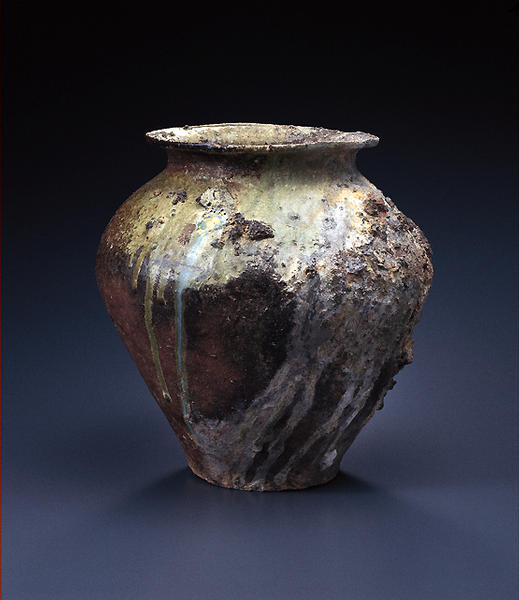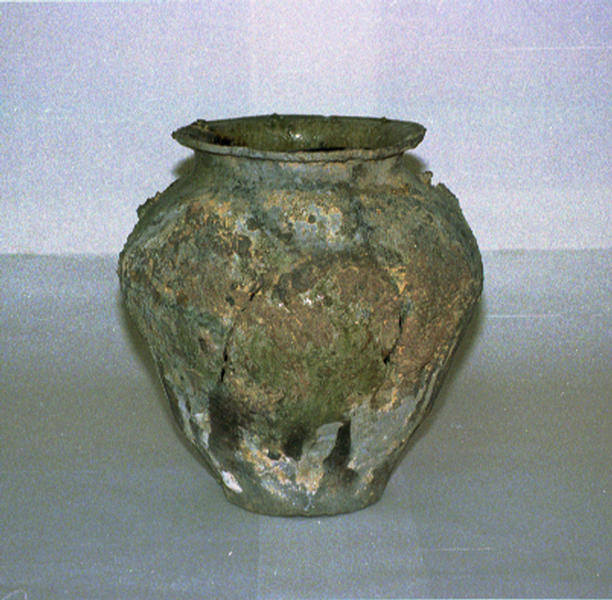Jar
- Tokoname kiln, Aichi pref.
- Late Heian period
- 12c
- Tokoname ware, natural ash glaze
- H-33.4 D-30
Catalogue Entry
Late Heian period, 12th century
Tokoname ware, natural ash glaze
Height, 33.4cm; mouth diameter, 22.3cm;
torso diameter, 30.0cm; base diameter, 15.0cm
This form of jar was a continuation of the medium-sized Sue ware jars of the late Heian period and became a distinctive shape of the Tokoname kilns, with large numbers of these jars fired at the beginning of the 12th century in the Tokoname kilns in the center of the Chita peninsula. The 12th century was at the height of the production of sutra burial mounds, and generally this shape of jar is thought to have been made specifically as an exterior container for sutra cases, as opposed to the standard use of such jars. The size of these jars was thus relatively determined by the size of the interior sutra containers, and an extremely large number of these jars have been excavated from sutra mounds throughout Japan. Many of these jars were found with dated sutras or inner sutra containers, and thus a dating system based on the shapes found with each date has been relatively easily devised. This sutra container is made of a black clay (high iron content clay) that is commonly found in the northern section of present-day Tokoname city, and it is a coil-built form. This method of hand-building is called yorikozukuri at Tokoname. The relatively wide lip edge and the swell of the shoulders indicate a production in the latter half of the 12th century.
This work is extremely well-fired with an overall brown fire-color and a thick flow of natural ash glaze in a dark green color across the shoulders. A section of this natural glaze flows to the lower half of the jar, giving a particularly strong appearance to the work. SN

